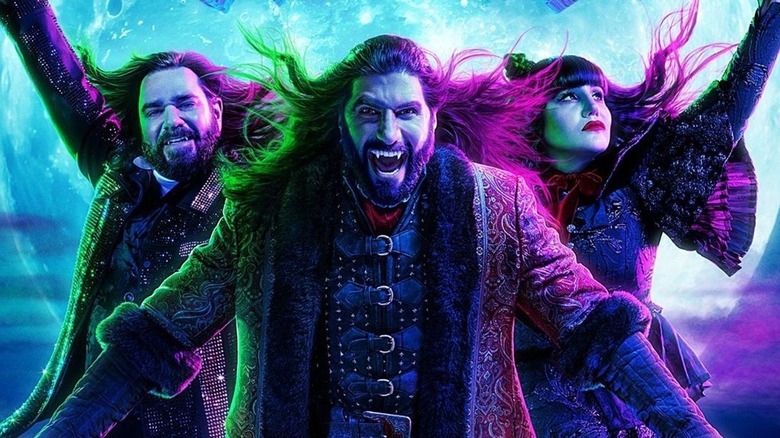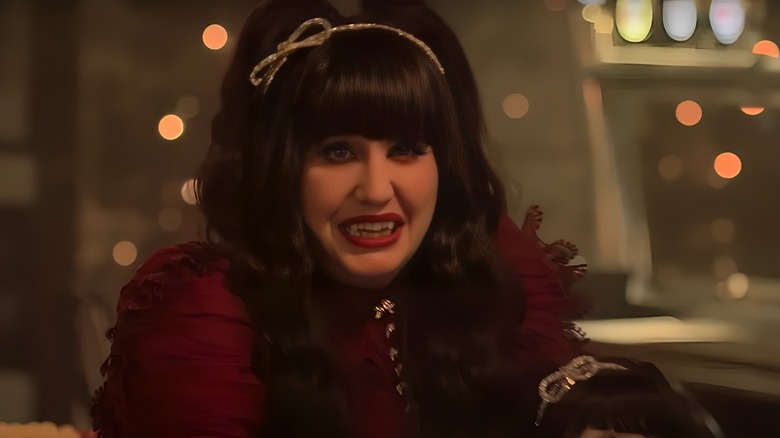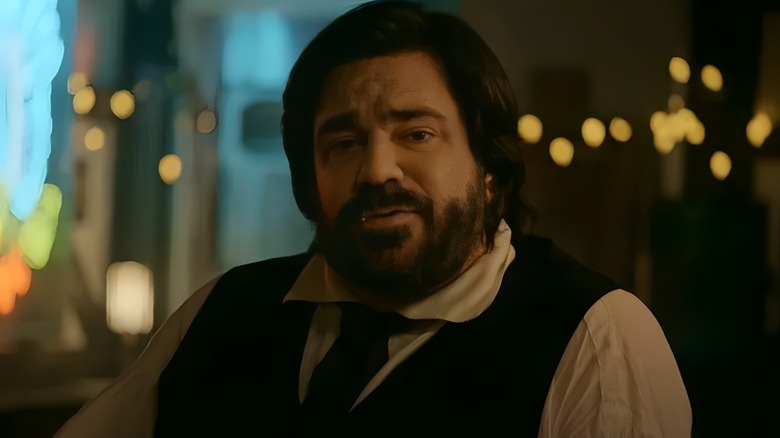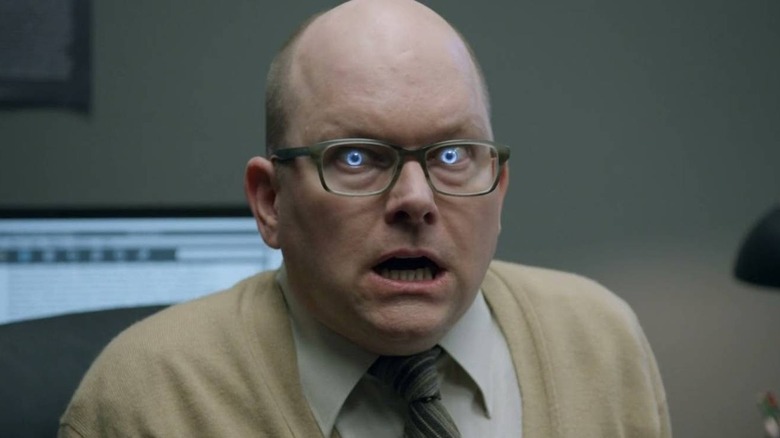What We Do In The Shadows: Vampire Hypnosis & Other Powers Explained
As "What We Do in the Shadows" returns for its fifth season with a brand new set of slightly misguided undead adventures, it's a great time to have a crash course to the cavalcade of vampiric powers Nandor the Relentless (Kayvan Novak), Nadja of Antipaxos (Natasia Demetriou), Lazslo "Jackie Daytona" Cravensworth (Matt Berry), and their kin possess. This makes for one massive laundry list of blood-sucking superpowers, custom-made to pay homage to tradition ... and to induce laughs whenever possible.
If you're even vaguely aware of standard vampire tropes, you're probably at least somewhat familiar with the basic powers all "What We Do in the Shadows" vampires have to various degrees. They're all unaging and effectively immortal, forever staying in the physical appearance they had at the time they were turned. They can heal from non-fatal wounds quickly and possess supernatural speed, strength, and senses. They can fly and have a host of shapeshifting abilities, like turning into animals and even vapor. Of course, they can also turn people into vampires by drinking the blood of a person, who then has to drink the blood of the vampire who bit them.
Despite their array of stealthy abilities, vampires can still be highly conspicuous. Being predators, they need to walk among the people — and their long lifespan means that sometimes they simply forget how to act nonchalantly amongst humanity. This is where the show's favorite vampire power comes in. Their ability to hypnotize people to forget things and order them around is something "What We Do in the Shadows" has drawn plenty of comedy mileage from, and there's no reason to believe that hypnosis won't be a key ingredient for vampiric laughs going forward ... as long as they remember to avoid hypnotizing the same person over and over again until the subject's brain overloads.
Individual vampires can have unique abilities
There are a whole bunch of vampire tropes and "What We Do in the Shadows" enjoys embracing them all, which means that individual vampires are often inspired by very different works of fiction. Because of this, specific vampires' exact powers and abilities can differ. This creates a fun combo mix of the standard vampire powers everyone knows to expect, and individual differences that prevent things from becoming boring.
As such, the majority of the show's vampires have certain unique abilities that set them apart from others — or highly powered-up versions of "ordinary" vampire talents. For example, The Guide (Kristen Schaal) enjoys using a combination of super-speed and a peculiar dark vapor form that basically amounts to teleporting, which creates a creepy enough effect to unsettle even other vampires.
The main vampire characters tend to run with their basic powers. Sure, Nandor has dabbled with pyrokinesis and the Ether, Nadja is a magnificent climber and has superb seduction powers, and Lazslo can communicate with animals like few others. However, "What We Do in the Shadows" saves its more unique (and uniquely useful) powers for more minor characters such as Jenna (Beanie Goldstein), whose invisibility proves to be highly dangerous for ska band singers and other humans alike.
Standard and strange weaknesses
As befits the show's tendency to mix classic vampire traits with stuff that's custom-made to work with the show's comedic sensibilities, the vampire weaknesses in "What We Do in the Shadows" are a combination of the classics and ... something entirely different. Because of this, the vampires in the show's universe are vulnerable to all the usual things — stakes through the heart, pretty much anything to do with religion, garlic, decapitation, you know the drill. As usual, they also can't enter a building uninvited, though the show sometimes glosses over this for convenience's sake. After all, it wouldn't be all that entertaining if every scenery change required a preceding scene where they negotiate an invitation, would it?
The show's vampires also have some highly specialized things they must avoid at all costs. It's not exactly a new thing that vampires don't consume human food. However, the show adds a very particular twist to this aspect of vampire anatomy: whenever they attempt to eat even the smallest canape, their body reacts with a violent stream of projectile vomit ... which, as the Baron (Doug Jones) could attest if he remembered anything of the night in question, is more than enough to send even the most powerful vampire flying.
And then there are the energy vampires
Apart from classic bloodsuckers, "What We Do in the Shadows" famously features a very peculiar take on the energy vampire subcategory. Technically called psychic vampires, these creatures are outwardly perfectly normal — almost too normal. Nevertheless, they have a whole host of powers that even normal vampires would be wise to dread.
An energy vampire feeds on its prey's emotional energy, though the type of energy they prefer can differ greatly. Colin Robinson (Mark Proksch) enjoys inducing irritation and boredom, while the other known vampire of this type, Evie Russell (Vanessa Bayer), feeds on pity. Energy vampires can emanate a blue glow and levitate when they're adequately powered up, and their physical powers and endurance are far above and beyond most other creatures. If Colin Robinson is any indication, they also have a very peculiar version of immortality: they die every 100 years and emerge from their gross former shell as a rapidly-developing baby to start the cycle anew. If an energy vampire feeds on enough psychic energy, they can even reach a superpowered state that vitalizes them greatly and enables them to siphon life force off nearby living things.
While a fully-powered energy vampire is truly terrifying and even a regular one is a soul-shriveling monster, the true horror of these creatures is that we still know very little about them. The show has been happy to add new powers to Colin Robinson's repertoire every season so far, and the viewers are still none the wiser on the energy vampires' true origins, let alone how many of them there are. It's unlikely that we'll ever know the full story, either — after all, some things are better (and creepier) when they're shrouded in secrecy.



